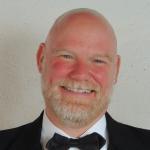Jeff Barnhart: Hal, last month I mentioned we’d continue with an exploration of the seminal early jazz classic, “Copenhagen.” Let’s postpone that for a month to share some of the terrific feedback and stories we’ve received from readers of our column since its inception.
Hal Smith: I’m very happy to know that so many TST readers are enjoying our discussions on a wide range of topics.
JB: One of the earliest emails we received (March 24, 2021) was from Jim Reiners, who for years has been involved with producing the Evergreen Jazz Festival in Evergreen, CO:
Jim Reiners: Hal & Jeff, Just a quick note to say how thoroughly I am enjoying your monthly contribution to TST! Lively, interesting and entertaining, and a great outlet for all of your combined knowledge! Thanks for sharing with the rest of us.
HS: Jim knows a lot about traditional jazz and swing and he has excellent taste in both styles of music. I really value his compliments regarding our columns!
JB: And here’s one dated June 4, 2021, from our friend (and terrific musician and arranger), Dan Levinson, referencing our column on “Panama” (June/July 2021):
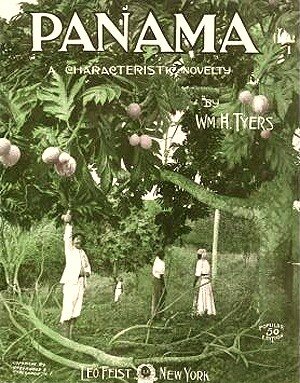 Dan Levinson: I don’t know if you’re aware that I taught a virtual “master class” on that piece for Molly and Bria’s New York Hot Jazz Camp (via Zoom) last October. I listened to and dissected 39 versions of it, recorded between 1911 (actually that was the Paragon Ragtime Orchestra’s stock arrangement of it) and 1959, and discussed the variations in the form, the keys, the harmony, and the melody. It’s one of my favorite pieces within our repertoire and it’s always fascinated me how it’s evolved over the years. There isn’t one single definitive version of it from “back in the day” that exemplifies how it’s played today.
Dan Levinson: I don’t know if you’re aware that I taught a virtual “master class” on that piece for Molly and Bria’s New York Hot Jazz Camp (via Zoom) last October. I listened to and dissected 39 versions of it, recorded between 1911 (actually that was the Paragon Ragtime Orchestra’s stock arrangement of it) and 1959, and discussed the variations in the form, the keys, the harmony, and the melody. It’s one of my favorite pieces within our repertoire and it’s always fascinated me how it’s evolved over the years. There isn’t one single definitive version of it from “back in the day” that exemplifies how it’s played today.
HS: As you said, Dan is a wonderful musician. From the message he sent, you can tell he is also a dedicated historian and researcher of early jazz and swing. It’s good to know that he is also interested in the origin of “Panama” and all the many variations—and that he shared his research with the jazz camp students.
JB: I was particularly pleased with this entry from New Black Eagle Jazz Band trombonist Stan Vincent (referencing our “origin stories” column in September, 2021).
Stan Vincent: Jeff, enjoyed your very complimentary comments in the latest TST about the NBEJB and how the band helped broaden your taste for traditional jazz. For me it continues to be one helluva ride.
Your mention of Armagnac brought back fond memories. When I was still drinking coffee my favorite ending to a special dinner included a snifter of that liquor plus a bit of dark chocolate. I do miss it.
Cheers!
PS: Below pic is essentially the NBEJB today, plus Duke when he’s in town.
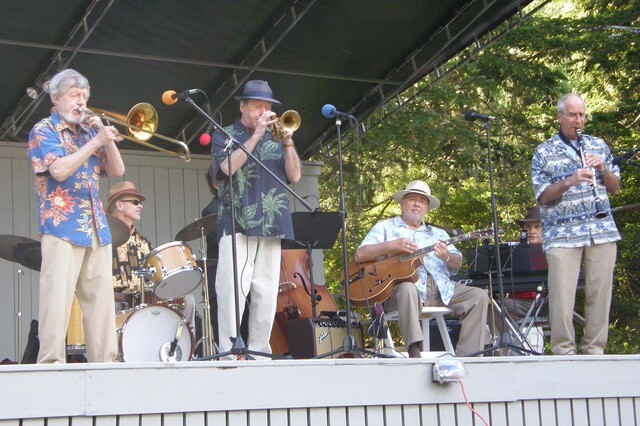
HS: I’m glad that you were able to credit the New Black Eagles as an early inspiration. Stan Vincent is the last remaining member of the 1970s version of the band. That group was an influence on bands across the U.S. and they also had a (well-deserved) dedicated fan base. I first heard them at the St. Louis Ragtime Festival in 1975 and they were a knockout!
JB: Regarding the same column, and in the “ah, youth” category, this one from Sept. 1, 2021, gave me a chuckle.
Pianist Dick Moulding (past student of Jeff’s): I loved reading your origin story in Syncopated Times.
We have a lot of overlap. I too was sucking-up records, seeking experiences, trying to connect. (I was already into George Lewis on Delmark, Sweet Emma, etc., before I encountered Bob Wright. My senior year in high school, my friend Fred and I drove all night to New Orleans in a Corvair convertible. Hey, you are only immortal once!)
HS: We received a beautiful note from Ida Melrose Shoufler—daughter of the great pianist “Kansas City Frank” Melrose—on Oct. 19, 2021. She thanked us for the biographical sketch and discussion concerning her father (October 2021). Jeff, I am grateful that both of us have gotten an opportunity to play Frank Melrose compositions for “Aunt Ida” in person.
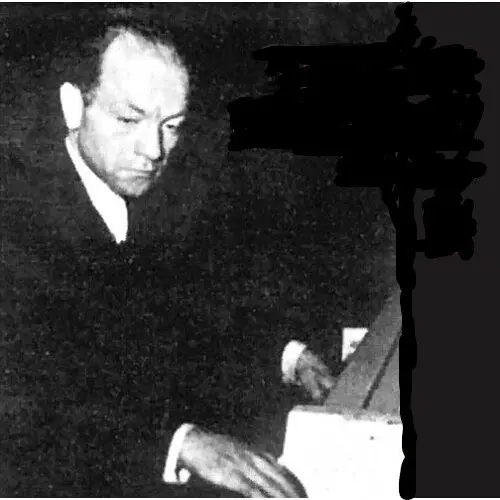
Ida Melrose Shoufler: So grateful to both you and Jeff, I am, for the beautiful article in the Syncopated Times about my dad. When Beth comes, I am going to have her read it to me again. My kids are also eager to hear anything about their grandfather. I can’t wait to show all of them this treasure! And it is just that…A treasure that is such a blessing I can’t begin to thank you and Jeff enough.
JB: But the topic that has generated the most response thus far, a flood that prompted this month’s theme, was our recent two-parter regarding the Firehouse Five Plus Two (May/June 2022), ranging from poignant to pithy.
HS: The latest message we received came from Wendy Maihack—widow of the great Jim Maihack (veteran of the Turk Murphy, Bill Allred and Bob Schulz bands)—arrived on June 10, 2022.
Wendy Maihack: Hi Hal. Just read your article, with Jeff about the FH5+2. Very nice. I have a few of their records I found in Jim’s pile!
Also, my uncle Homer Welch played with them a bit, as well as with Turk on the rare occasion he employed a drummer!

HS: I had no idea that Homer played with the FH5+2, though I heard him on a Turk Murphy LP called Frisco ’58, released by Larry Conger. Larry was the cornetist at the time when Homer played with the band. Also, Jim Maihack was on tuba with Turk in the late 1960s and early 1970s, when the Firehouse Five Plus Two were guests at Earthquake McGoon’s. On the last song of the evening, the bands massed onstage—so whether Jim was on tuba, trombone or banjo, he played at least one song a night with the Firehouse Five! My tapes of those sessions have gone missing, but I hope they will turn up one of these days.
JB: While I was compiling these correspondences, I was listening to the GHB LPs 91-93, a live recording of the Murphy band chronicling a two-night concert appearance from April, 1972. Maihack ROARS on that tuba, SO strong and sonorous. In a way, listening to this great set was in his memory.
Hal, do you remember joining me at a jazz camp I ran in CT the week leading up to the Great Connecticut Traditional Jazz Festival in the 2000s? I’m still in touch with some of the students and this letter from June 3, 2022 is fun.

From Wes English: Jeff, This is a voice from one of your many pupils at adult jazz camp at the Great Connecticut Jazz Festival writing to tell you how much I am enjoying your review of the Firehouse Five plus Two albums with Hal Smith. At one of the summer camp sessions I remember that [trombone instructor] Tom Boates asked me who my favorite trombonist was. I told him it was Ward Kimball. I would have to say that my interest in Trad Jazz was kicked off by the Firehouse Five recordings. I’m still today trying to emulate that wonderful group.
And I often think back with great pleasure to the one-week jazz camps that preceded the GCJF. Thank you for all that you did to make them such a great experience. As a result of those camps I am still enjoying playing trad jazz. I’m attaching a photo of five members of the State Street Traditional Jazz Band (of Portland, Maine) playing on the street in the Old Port section of that city only a week or so ago.
HS: I certainly remember that jazz camp and I wish I could have talked with Wes English about having the Firehouse Five as a first influence!
JB: This one, dated June 1, 2022, is lots of fun as well!
Tedi Siminowsky: I was so pleased to see your memory and analysis of The Firehouse Five Plus Two. You mention the Beverly Cavern but left out one very important fact that maybe isn’t well known. The Cavern allowed under aged attendees! In my late teens (1956-58) I would go with my boyfriend whose parents were big traditional jazz fans. It was not necessary that they chaperone us. We would sit just in front of the soprano sax player who with his bulging eyes I think kept an eye on us. One of my favorite songs was “I Scream You Scream We All Scream for Ice Cream.”
Years later I was living in Berlin always listening to BBC. I especially liked a call-in music program which ran the gamut from highbrow to low down. By post card—that was the only way—I submitted my request for the “Ice Cream” song. By post card I got announcement of when I should be sure to tune in. There it was—a cold Berlin morning with the “Ice Cream” song.
Thanks for the memories.
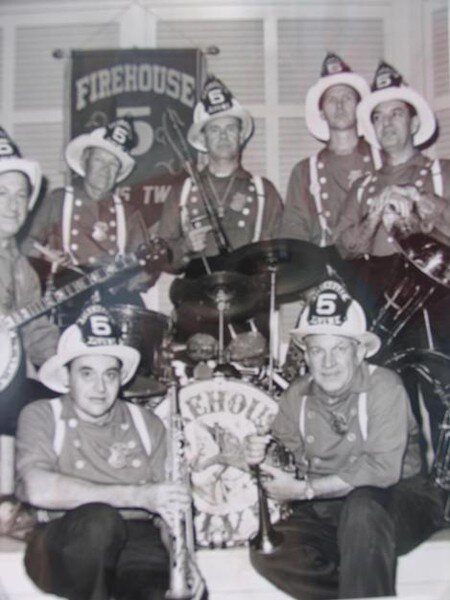
HS: She must have been referring to George Probert! It really was fascinating to watch his eyes when he was taking a solo.
JB: And how fantastic the club allowed minors in for a listen.
Again, from Jim Reiners on May 17, 2022, this time regarding his love for the FH5+2:
Jim Reiners: Hi, Hal & Jeff: Thank you so much for your TST feature on the band that got me started with all this! I know from previous conversations that it had the same effect on Hal. I actually have three boxed sets of single-play 45 rpm records of theirs that must have been produced in the late ’40s. Might be worth something to a collector. I’m just sorry I never had the opportunity to enjoy the band in person. I grew up in the Chicago area, and back then California may as well have been on another planet.
I’m not sure how long-ago Ward Kimball died, but when he did, Time magazine ran an obit noting that he was a great Disney animator. The obit included a photo of Ward wearing his fire helmet, and I thought it was really funny (or uninformed) that there was no explanation of why the helmet or any mention of his jazz career.
Your comments on several of their songs brought so many memories back to the surface! I always enjoyed the “hokum” because I thought they kept it under control and used it judiciously. I never disliked anything they recorded, but I always especially enjoy “The World Is Waiting for the Sunrise” and “Alabama Jubilee.” And how could they possibly have been with a better label than Good Time Jazz?!
Sterling Nelson [N.B. Founder of the Evergreen Jazz Festival at which both Jeff and Hal have been frequent performers] frequently talked about the “joy of jazz.” In my book, the Firehouse Five Plus Two epitomize it! Thanks again for writing about them. I look forward to the next installment.
HS: Another person brought to traditional jazz by the Firehouse Five Plus Two! I’ll have to talk with Jim about that the next time I see him.
JB: Hal, this next one arrived in the form of a handwritten letter sent to Andy Senior. I didn’t know who this chap was, but then you shed light on his significance!
HS: Doug Parker was very active in the Southern California jazz scene for many years—as a performer and as a supporter of traditional jazz bands. I was not aware that he played with Clarke Mallery!
Doug Parker: As a very long-time fan of the Firehouse Five Plus Two (since I heard them first on 78s in 1950, then live in Claremont, CA in 1951, and later at the famous Beverly Cavern in Los Angeles in the ’60s and ’70s), I enjoyed the article by Hal Smith and Jeff Barnhart in the May issue of TST immensely!
When the band recorded in 1952, their clarinetist was Tom Sharpsteen [as we noted], who played an Albert system clarinet with an upturned bell, like the one used by Alphonse Picou. I remember seeing a photograph of that particular edition of the band showing a sign (probably made by Ward Kimball) which read: “Yes, it’s a clarinet.” (My colleague from the Good Time Levee Stompers, trumpeter Wes Grant, had a great line about Tom’s horn: “It’s a clarinet, but it’s going through a sax change!”
In 1965 I played banjo with the New Orleans-styled Good Time Levee Stompers, founded by Jerry Kaehale, but after he moved from southern to northern CA, it was led jointly by clarinetist Ron Going and pianist Ron Ortmann. On one particular occasion, Ron G. was unable to make the job (we were playing weekends at a beer bar in Hermosa Beach, CA, called “The Rumble Seat,” which previously had been “The Green Bull,” with a band under the leadership of Johnny Lucas (a “Firehouse Five” connection here!). The substitute clarinetist was none other than Clarke Mallery [who recorded with FH5+2 through 1951]. He was an excellent fit for the band.
At one point, [Clarke] expressed his pleasure with the three-man drummer-less (in the Turk Murphy tradition) rhythm section, which consisted of Ron Ortmann, piano, Pete Kier, brass bass (his instrument was a “helicon,” which looks like a French horn on steroids), and yours truly on banjo. Clarke said, “This is one hell of a good rhythm section!” It’s hard to believe that this truly unforgettable experience occurred 57 years ago!
JB: My favorite of all the letters came from a musician with whom you have had a long association, Hal!
HS: You’re right, Jeff. I met Ted des Plantes in the early 1970s and we played together in many bands over the years. His descriptions of the FH5+2 at Disneyland are right in line with what I remember.
Ted des Plantes: I’ve always liked traditional jazz, even when I was young. During my high school years in the early 1960s I lived in Southern California near Disneyland where the Firehouse Five Plus Two played every Saturday night from mid-May until the fall. It was my favorite band, I had (still do) all their records, so I went to see them countless times. During that time, one could get into Disneyland by purchasing a very reasonable general admission ticket, not having to buy the pricey ticket book that gave access to the rides. I’d get the ticket, then make a beeline to their venue to spend the evening.
During the first couple of years, they played in an outdoor gazebo located in Frontierland, thereafter they were located on stage in the Golden Horseshoe Saloon, which, incidentally, only served Pepsi. They were great and I was in heaven. I have to say, I was a weird kid. I lost chances to get girlfriends because I liked this old fashioned, non-teen friendly music. I took one girl there on a date and spent the night watching and listening to the band. Although I bought her more than one Pepsi, she was not thrilled.
I first got to know Don Kinch, the band’s tuba player, and cornetist Danny Alguire during this time. I’d get to know them much better years later when I moved to Portland, Oregon to play in Kinch’s band, The Conductors Ragtime Band (As the FH5+2 wore antique fireman’s costumes, we dressed in train conductor togs). This band’s biggest gig was to play the St. Louis Ragtime Festival in 1978.
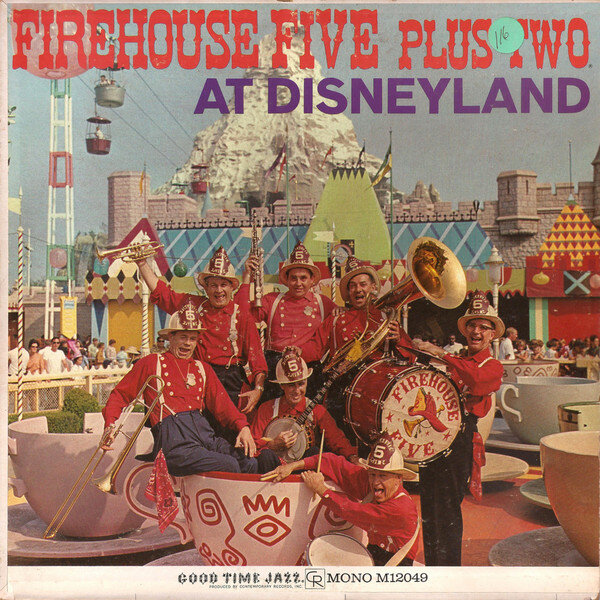 The Good Time Jazz LP (lately also on CD) The Firehouse Five Plus Two at Disneyland created a good representation of one set at the Golden Horseshoe by the FH5+2. The only thing it couldn’t do was present entirely the BIG FINISH to a typical set. The band would launch into “Tiger Rag” or a similar rouser.
The Good Time Jazz LP (lately also on CD) The Firehouse Five Plus Two at Disneyland created a good representation of one set at the Golden Horseshoe by the FH5+2. The only thing it couldn’t do was present entirely the BIG FINISH to a typical set. The band would launch into “Tiger Rag” or a similar rouser.
About midway through, after everyone else had soloed, soprano saxophonist George Probert would launch into the first of perhaps half a dozen choruses, each one more intense that the last, with the powerful, thrusting two-beat rhythm section pounding away behind him. Around chorus four, leader Ward Kimball picked up a boom bass (a spring-loaded pole with a tambourine and cow bell attached with a small cymbal on top) and begin to thump it onto the stage floor on beats one and three while striking the cowbell or tambourine with a drumstick on beats two and four, all the while waving his big fireman’s bandana attached to the top of the boom bass.
When it seemed that it couldn’t get more exciting, drummer Eddie Forrest would jump in with a chorus long drum solo followed by a frenzied two choruses of hot ensemble replete with a loud fire truck siren break. At its conclusion, the sweating audience would invariably scream its extended approval. I saw this happen countless times and I always loved it. The FH5+2 not only knew how to play hot jazz but also how to entertain an audience.
My visits to Disneyland continued until I joined the Army at the beginning of 1967.
During the next three years I learned to play jazz semi-competently and got to see the FH5+2 very infrequently but spent most of my time in Germany where I played in good German amateur jazz bands. By the time of my discharge the FH5+2 was no longer at Disneyland. I played tuba for a few years with friend Hal Smith’s Down Home Jazz Band and began a several-year gig at multiple Shakey’s Pizza Parlor locations learning to play piano. In 1976 I moved to Portland to play in Don Kinch’s band and opened a record shop that was attached to Kinch’s string instrument repair shop. I lost my ass.
The FH5+2 had been disbanded for several years, but during my first year there Kinch got a call from Ward Kimball, who was to re-form the FH5+2 to play in the famous 1980 New Year’s Day Rose Parade in Pasadena, California. Kinch flew to California and rejoined the band, playing second trumpet with the rest of the band on a float for the length of the parade. Danny Alguire, who had developed gout, played seated with his leg extended. The banjoist was Harper Goff from the original band who was replacing Dick Roberts, who had passed on. Throughout the whole parade (seven plus miles) they played “Panama” repeatedly at Ward Kimball’s instruction, but the television coverage used one of their records of a different tune altogether! That was the last gig of the Firehouse Five Plus Two.
JB: Hal, it’s very gratifying to know that our observations and topics are being enjoyed by so many readers from all over the country!
HS: I couldn’t agree more, Jeff. Comments like these make our writing efforts worthwhile.
JB: Let’s get back to the music next month with “Copenhagen!”
HS: That’s going to be quite an interesting discussion. I’m looking forward to it!
Jeff Barnhart is an internationally renowned pianist, vocalist, arranger, bandleader, recording artist, ASCAP composer, educator and entertainer. Visit him online atwww.jeffbarnhart.com. Email: Mysticrag@aol.com
Hal Smith is an Arkansas-based drummer and writer. He leads the El Dorado Jazz Band and the
Mortonia Seven and works with a variety of jazz and swing bands. Visit him online at
halsmithmusic.com




